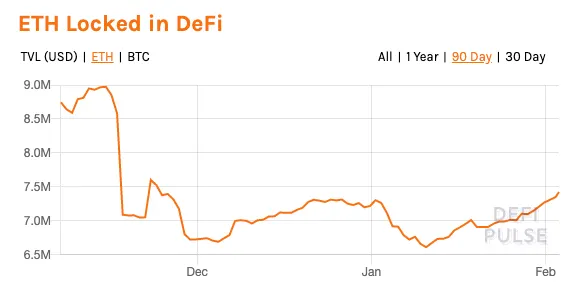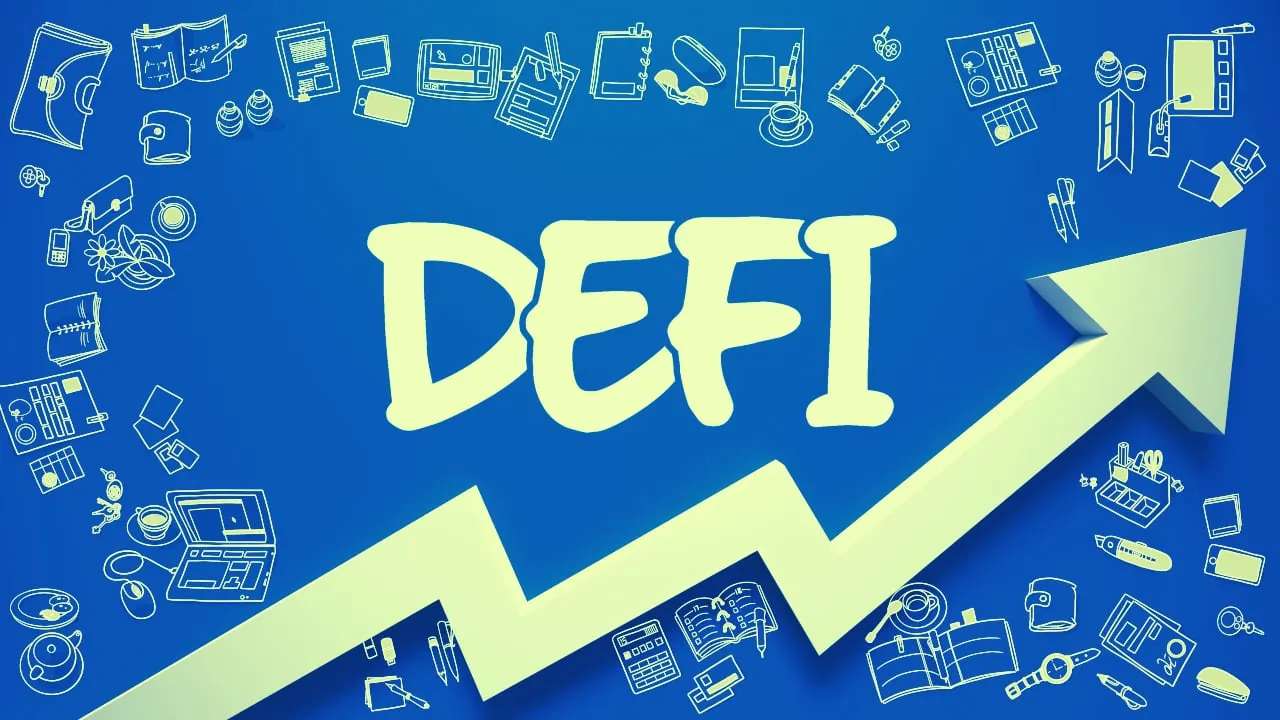In brief
- Total value locked in DeFi has surged past $30 billion, a 2,700% increase since June.
- The increasing value of Bitcoin and Ethereum is driving much of the rising TVL, even as the raw number of those assets is lower than in previous months.
- As the price of ETH increases, will it be good for DeFi?
The total value locked in DeFi protocols has hit another milestone, surpassing $30 billion less than a year after first crossing the $1 billion dollar mark, according to data aggregator DeFi Pulse.
But although DeFi apps continue to grow in users, the increasing locked value is also getting a sizable boost from the surging price of Bitcoin and Ethereum.
DeFi (shorthand for “decentralized finance”) is a catch-all term for non-custodial, peer-to-peer financial products, which are becoming increasingly popular among cryptocurrency investors. The niche industry is even getting name-checked routinely now by billionaire Dallas Mavericks owner Mark Cuban.
“Total value locked” (or TVL) in DeFi is a metric that measures the amount of cryptocurrency (primarily Ethereum, but some Bitcoin too) that is being injected into these decentralized products by their users. Its rise above $30 billion today marks a growth rate of nearly 2,700% since the Summer of DeFi kicked off in June 2020.
But that meteoric rise in TVL is owed in part to the price of Bitcoin and Ethereum, up 264% and 545% respectively during that same time frame. In fact, the number of BTC and ETH locked in DeFi are down from their all-time highs, even if the total value of the tokens that remain is still pushing higher.
For background, DeFi products use automated smart contracts to run on decentralized networks such as Ethereum. These applications aim to provide financial services like issuing loans, swapping between assets, and providing interest bearing deposits without the use of a centralized coordinating authority. In other words, it allows users to provide and receive bank-like services without actually needing a bank.
Removing centralized control is intended to lower costs for the end user and democratize access, making it impossible for well-heeled players to interfere with the market to protect their interests, as seen in the case of Robinhood halting trading of GameStop and other shares last week.
DeFi protocols rely on deposits of cryptocurrencies from users to generate loans and provide liquidity for swapping between assets, measured as the total value locked. And while many different digital assets make up the deposits held by various DeFi protocols, Bitcoin and Ethereum make up by far the largest segments of locked value within the ecosystem.
ETH tokens locked in DeFi hit an all time high of 8.78 million on September 16 last year, when the ETH prices were just $389, for a TVL of more than $3.4 billion. Since then, the number of ETH locked has fallen 24% to just 7.43 billion. But the increased price of ETH, now at more than $1,600, means the total value locked has actually increased significantly—by more than $11.9 billion.
Total value locked has become the de facto growth metric for the broader DeFi market, and has put up some remarkable gains over the past nine months.

While the amount of ETH locked in DeFi protocols fell sharply last November, and then dipped again in early January—just as the price of ETH started really picking up and users likely pulled their ETH out to chase profits—that trend is beginning to reverse. Even now as ETH hits a fresh all-time high, more tokens are beginning to flow back into DeFi, according to data from DeFi Pulse.
It’s a sign that the early success of many of these protocols may be sustained after all. Who knows, they may even have “the potential to explode.”
Disclaimer
The views and opinions expressed by the author are for informational purposes only and do not constitute financial, investment, or other advice.

